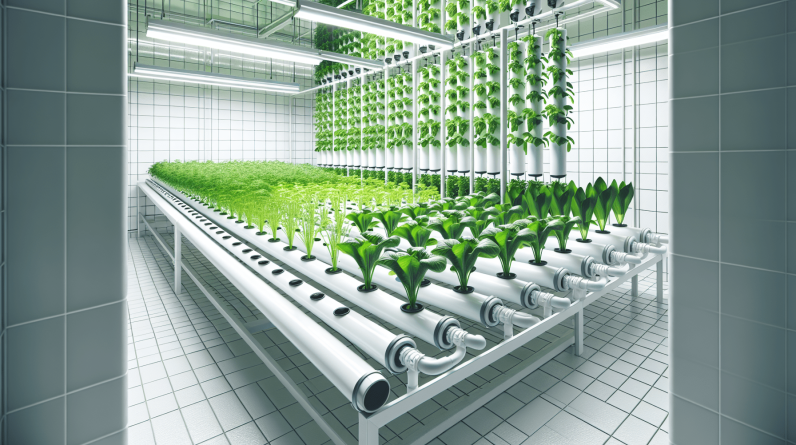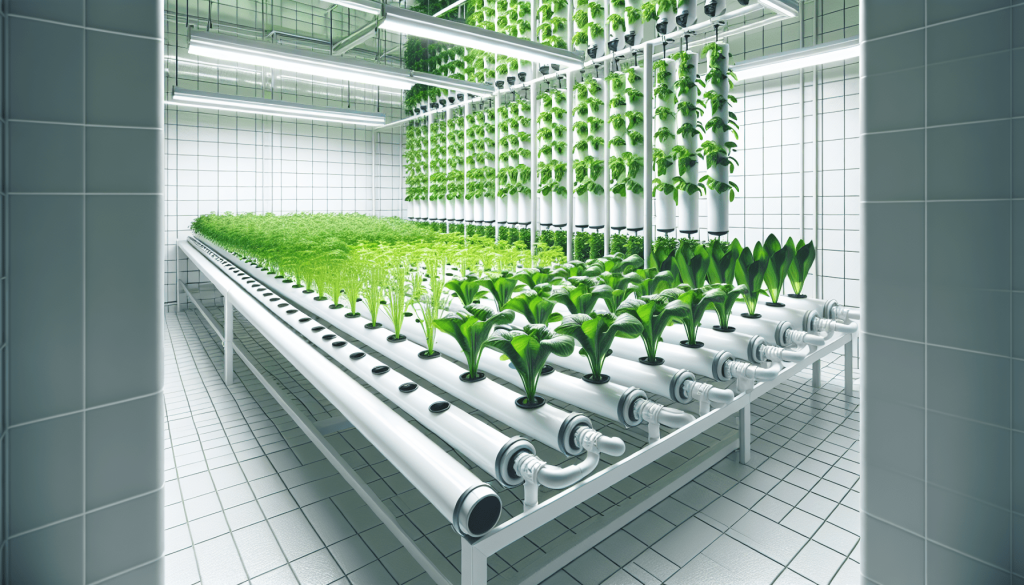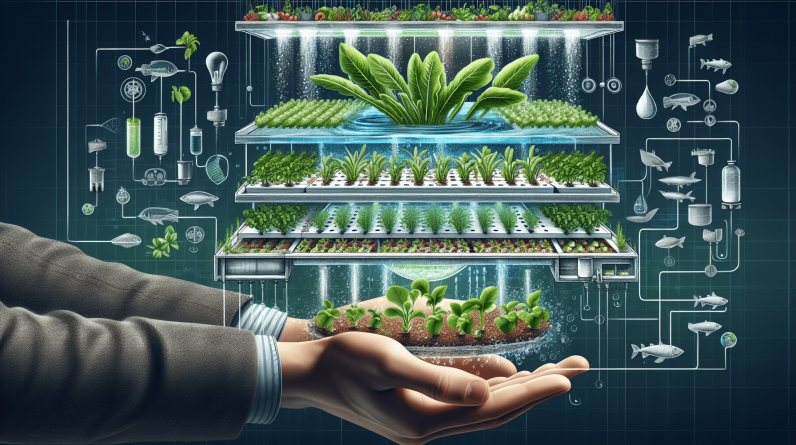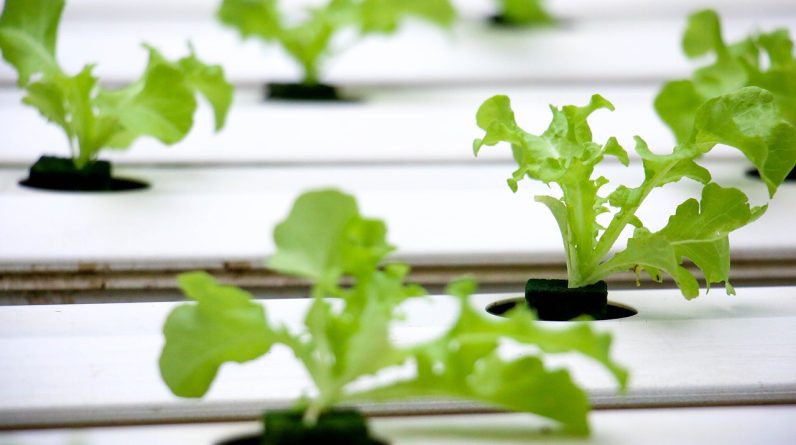
How to Set Up a Hydroponic System at Home
So you’re interested in setting up a hydroponic system at home? That’s a fantastic choice! Hydroponic systems are a great way to grow plants efficiently and sustainably right in your own living space. Whether you’re a seasoned gardener or a complete beginner, this guide will walk you through the process of setting up your very own hydroponic system step by step. Let’s dive in!
Choosing the Right Type of Hydroponic System
When it comes to setting up a hydroponic system at home, the first step is choosing the type of system that best suits your needs and space constraints. There are several different types of hydroponic systems to choose from, each with its own set of pros and cons.
Types of Hydroponic Systems
There are six main types of hydroponic systems:
-
Deep Water Culture (DWC): Plants are grown in a nutrient solution with their roots suspended in the water. This system is easy to set up and maintain, making it great for beginners.
-
Nutrient Film Technique (NFT): Plant roots are exposed to a thin film of nutrient solution flowing through channels. NFT systems have excellent oxygenation for roots but require constant monitoring.
-
Ebb and Flow (Flood and Drain): Nutrient solution is periodically flooded and drained from growing containers. This system is versatile and low-maintenance.
-
Drip System: Nutrient solution is delivered to the plants through a network of tubing and drippers. Drip systems are highly adaptable and efficient.
-
Wick System: Nutrient solution is drawn up to the roots through a wick. This system is simple and low-cost but may not be suitable for large plants.
-
Aeroponic System: Plant roots are suspended in the air and misted with nutrient solution. Aeroponic systems provide excellent oxygenation for roots but can be complex to set up.
Choosing the Right System for You
Consider factors such as space, time, budget, and plant types when choosing a hydroponic system. Deep Water Culture and Wick systems are great for beginners, while Drip and Ebb and Flow systems are versatile options for a variety of plants. Determine the system that best fits your needs and resources before moving on to the next steps.

Setting Up Your Hydroponic System
Now that you’ve chosen the right type of hydroponic system, it’s time to set it up! Follow these steps to assemble your hydroponic system and get ready for planting.
Materials Needed
Gather the following materials before setting up your hydroponic system:
- Growing containers or trays
- Nutrient solution
- Growing medium (e.g., perlite, clay pellets)
- Water pump and air stones (for oxygenation)
- pH testing kit
- Lighting system (e.g., LED, fluorescent)
- Plants or seeds
Step-by-Step Setup
-
Prepare the Growing Container: Clean the growing container or tray thoroughly with soap and water. Ensure that it is free of any contaminants before proceeding.
-
Add the Growing Medium: Fill the growing container with your chosen growing medium. Make sure it is evenly spread and level in the container to provide stability for your plants.
-
Set Up the Nutrient Solution: Mix the nutrient solution according to the manufacturer’s instructions. Adjust the pH of the solution using a pH testing kit to ensure it falls within the optimal range for your plants.
-
Install the Water Pump and Air Stones: Place the water pump in the nutrient solution and connect it to the air stones. The air stones will help oxygenate the solution, promoting healthy root growth.
-
Position the Lighting System: Place the lighting system above the growing container at the appropriate height for your plants. Ensure that the light source provides adequate coverage for all the plants in the system.
-
Plant Your Seeds or Seedlings: Once the system is set up and running, plant your seeds or seedlings in the growing medium. Make sure to follow the recommended spacing and planting depth for your specific plants.
Congratulations! You’ve successfully set up your hydroponic system and are ready to start growing your own fresh produce at home.

Maintaining Your Hydroponic System
After setting up your hydroponic system, it’s crucial to maintain it properly to ensure the health and growth of your plants. Regular maintenance tasks will help you troubleshoot any issues and optimize the performance of your system.
Routine Maintenance Tasks
-
Monitor Nutrient Levels: Check the nutrient solution levels regularly and top up as needed. Keep an eye on the pH and adjust if necessary to maintain optimal nutrient uptake for your plants.
-
Inspect Plant Health: Monitor your plants for signs of nutrient deficiencies, pests, or diseases. Address any issues promptly to prevent them from spreading to other plants in the system.
-
Clean the System: Regularly clean the growing containers, tubing, and components of your hydroponic system to prevent algae growth and blockages. Use a mild solution of water and vinegar to disinfect the system.
-
Prune and Harvest: Trim back overgrown plants and harvest mature crops regularly to encourage new growth and avoid crowding in the system. Pruning also helps improve air circulation and light penetration for healthier plants.
Troubleshooting Common Issues
-
Root Rot: If you notice mushy or discolored roots, root rot may be the issue. Ensure proper oxygenation and drainage in the system to prevent waterlogging.
-
Nutrient Deficiencies: Yellowing or stunted growth can indicate nutrient deficiencies in your plants. Adjust the nutrient solution accordingly to provide the necessary nutrients.
-
Algae Growth: Algae can thrive in hydroponic systems exposed to light. Covering the nutrient solution or using light-proof containers can help prevent algae growth.
By performing regular maintenance tasks and addressing any issues promptly, you can keep your hydroponic system running smoothly and your plants thriving.

Growing Plants in Your Hydroponic System
Now that your hydroponic system is up and running, it’s time to start growing plants! Whether you’re growing herbs, leafy greens, or flowering crops, there are a few tips to keep in mind to maximize the success of your hydroponic garden.
Plant Care Tips
-
Optimal Lighting: Ensure your plants receive adequate light from the lighting system. Adjust the light cycle and intensity based on the needs of your plants to promote healthy growth.
-
Nutrient Management: Monitor nutrient levels and pH regularly to ensure your plants are receiving the right balance of nutrients. Adjust the nutrient solution composition as needed for optimal plant health.
-
Watering Strategies: Depending on the type of hydroponic system you’re using, establish a watering schedule that meets the needs of your plants. Avoid overwatering or underwatering to prevent root issues.
-
Spacing and Pruning: Give your plants enough space to grow and spread out in the system. Prune back overgrown plants to maintain airflow and light penetration for all plants in the system.
Recommended Plants for Hydroponic Growing
Some plants thrive particularly well in hydroponic systems due to their adaptability to soilless cultivation. Consider growing the following plants in your hydroponic system:
- Herbs: Basil, mint, cilantro
- Leafy Greens: Lettuce, kale, spinach
- Vegetables: Tomatoes, peppers, cucumbers
- Microgreens: Kale, radish, broccoli
- Flowering Crops: Strawberries, marigolds, orchids
Experiment with different plant varieties to see what grows best in your hydroponic system and enjoy the fresh produce right from your home.

Conclusion
Setting up a hydroponic system at home is a rewarding and sustainable way to grow your own fresh produce year-round. By choosing the right type of system, setting it up correctly, maintaining it regularly, and following plant care tips, you can enjoy a successful hydroponic garden right in your living space. Get started on your hydroponic growing journey and watch your plants flourish in this innovative and efficient growing method. Happy growing!










